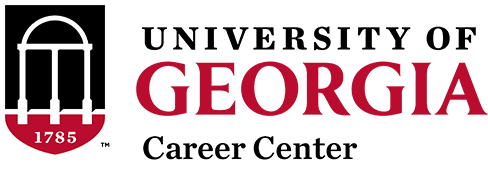This blog post has been updated by Megan Elrath, Career Consultant on June 11, 2024.
A creative resume, or a resume with creative design elements, is something that many UGA students ask about in the Career Center. The rules aren’t always the same for every situation, but here are a list of tips if you are interested in venturing into the creative side of resumes:
Do your research. Not every employer will appreciate a creative resume. It’s your job to know your industry, the specific niches within your industry where you will be applying, and whether or not a creative resume is appropriate for you. Check the company website, get in touch with connections within the company, and ask friends who have experience with the employer to find out what the culture is like and if a creative resume will leave a good impression on the employers or will send your resume to the “no” pile.
Creative resumes are necessary for certain positions. With all of the above being said, keep in mind that if you are in a creative field or expect to be applying to creative positions (graphic designer, creative advertising, interior design, etc.), a resume with at least some creative elements is probably the best route for you. You want to begin letting employers see your creative side and eye for design. If you're still unsure about making a creative resume, talk with your career consultant.
Balance design and content. Having a creative resume isn’t useful if the template or design of your own creation cuts out half of your content. The goal is to strike a balance that shows your personality and creative side while still ensuring that you’re highlighting all of your relevant experience. Stop by the Career Center for advice if you’re unsure of your current format.
Remember Applicant Tracking Systems (ATS). Many organizations use Applicant Tracking Systems, often referrerd to as ATS, to streamline their recruiting operations. Most ATS scan resume to look for key words and phrases in an attempt to determine if the candidate meets the job requirements. Some creative formatting elements can confuse ATS and cause your resume to be rejected. In general, avoid text boxes, columns, tables, and pictures. However, you can include color, lines, and shading to add some creativity to your resume.
You don’t have to start from scratch. You can update your traditional resume with a few creative design elements rather than creating or finding a whole new design. Some things you may choose to try are pops of color (e.g. your name and section titles), dotted or dashed lines instead of solid lines, or a “logo” look for your name.
Keep both versions. Keeping in mind that employer research is key before submitting a creative resume, it will be much easier on you if you keep your original, traditional resume for the employers who do not want color or creative design.
Adobe is your friend. Don’t forget to save the final version of your resume in PDF format and submit the PDF version to employers in order to retain formatting, including design and fonts.
Don’t keep it to yourself. Before submitting a creative resume, get a second opinion to ensure that the design flows well and that your content and experience is still clear in the new format. The Career Center is happy to critique creative resumes, so make an appointment with your career consultant or check the website for their drop-in hours before applying!
